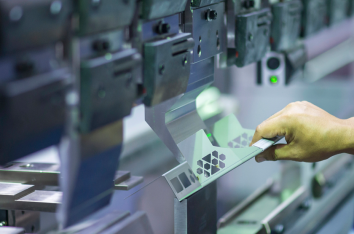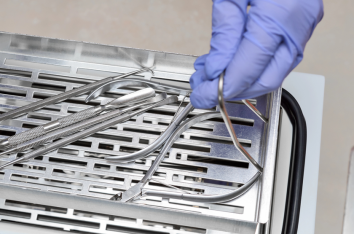Rockets operate at the edge of materials science. Minute residues can destabilize propellants, contaminate oxygen service, derail bonding, or seed early fatigue.
Building a disciplined approach to cleaning keeps tolerances tight, interfaces stable, and launch risk under control. Here’s how to clean rocket components with an aerospace-grade mindset.
Start with Risk, Materials, and Service
Every component has a cleaning risk profile. Titanium, Inconel, stainless, and aluminum alloys each react differently to chemistries and temperatures; carbon composites and polymeric seals add compatibility constraints. Oxygen and nitrous oxide service demand extreme cleanliness with low non-volatile residue and careful material selection.
For parts bound for vacuum, surface films and trapped volatiles must be minimized to prevent outgassing that contaminates optics or sensors.
Chemistry Selection for Aerospace Soils
Rocket manufacturing introduces complex soils: machining oils, drawing compounds, particulate, masking residues, silicones, and human contact films. Match chemistry to the load:
- Aqueous wash systems remove particulates and many water-dispersible residues with controlled pH to protect alloys.
- Modified alcohol/hydrocarbon degreasers excel on petroleum-based lubricants and waxy films, often in sealed, vacuum-capable machines.
- Modern halogen-free solvents paired with vapor or vacuum processes deliver low-residue finishes for tight-tolerance surfaces.
Document concentration ranges, temperature limits, and exposure times tied to each material class.
Mechanical Energy That Reaches Hidden Features
Chemistry unlocks soil; mechanical energy moves it out. Spray-under-immersion brings shear to complex geometries. Ultrasonic cleaners can be highly effective for metallic parts and intricate passages; apply only where component design and build standards allow.
Vacuum assist and pressure pulsing evacuate trapped air from capillaries and lattice structures, improving exchange. Fixturing that orients parts for drainage, avoids deep nests, and opens flow paths is as important as the energy source.
Vapor And Vacuum Vapor Degreasing
For precision metallic parts, vapor degreasing provides consistent, low-residue cleaning by condensing pure solvent vapor on cooler surfaces.
Vacuum vapor systems raise performance by removing air from blind holes, drawing solvent into tortuous channels, and delivering dry parts rapidly. These platforms pair well with halogen-free chemistries engineered for aerospace cleanliness targets.
Aqueous Systems for Particle Control
Water-based platforms shine at particle removal and ionic control. Multistage immersion or spray lines combine wash, DI rinses, and drying.
Closed-loop DI systems maintain low conductivity, and staged filtration (with absolute-rated elements where needed) keeps fines out of final rinses. For aluminum or magnesium, a moderated pH and temperature avoid surface damage while still lifting soils.
Drying For Oxygen, Vacuum, And Bonding Readiness
Residual moisture or solvent can trigger corrosion, outgassing, or bond failure. Match method to geometry and service:
- Hot air impingement and air knives for open shapes.
- Vacuum drying for capillaries, honeycomb, and tight IDs.
- Staged convection or IR to pull bulk liquid before a final dry.
Add temperature and time interlocks so parts exit ready for measurement, assembly, or cleanroom packaging.
Continuous Improvement in Flight Hardware Reality
Trend defects, re-cleans, bond pull failures, and particle alarms back to process data. Small changes in fixturing angle, ultrasonic power density (where allowed), or rinse time can unlock large gains in stability. Periodic design reviews with manufacturing and quality teams keep cleaning aligned to evolving component designs and flight requirements.
By treating how to clean rocket components as a controlled, evidence-backed process that is anchored in material compatibility, robust mechanics, disciplined bath health, and documented verification, teams protect precision, reduce rework, and support safer missions from assembly to ascent.
Talk to the Aerospace Cleaning Specialists
Since 1920, Baron Blakeslee has engineered precision cleaning systems that support flight-critical manufacturing. Built in Williamstown, WV, our American-made platforms include vapor and vacuum degreasers, modified alcohol/hydrocarbon systems, aqueous lines, hybrid solutions, ultrasonic cleaners for approved metallic parts, and solvent recycling—standard or custom.
We help aerospace teams hit particle, NVR, ionic, oxygen-service, and vacuum-readiness targets with automation, data logging, and validation-friendly controls. From dense lattices to tight capillaries, we design for real geometries and real throughput. Ready to begin? Contact us to start a consultation.




